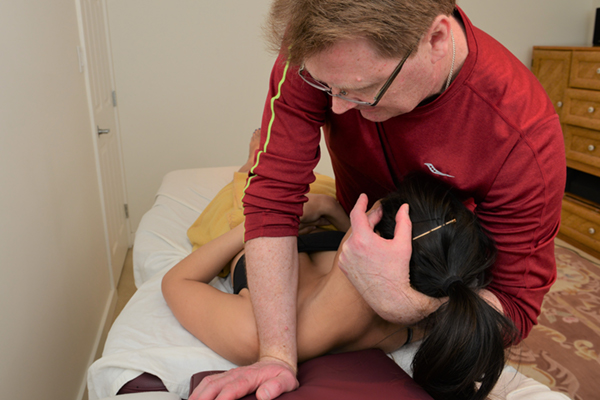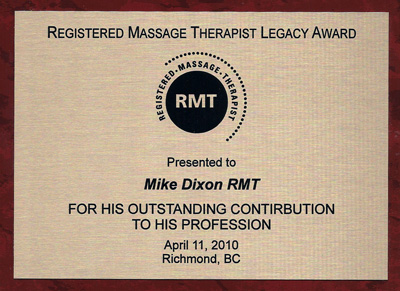MS Research
MASSAGE THERAPY AND MULTIPLE SCLEROSIS
MULTIPLE SCLEROSIS MASSAGE THERAPY
MS Research by Mike Dixon, RMT
In May 2004, Mike Dixon, RMT and Dr. Liljana Kordic with the help of the students at the West Coast College of Massage Therapy (WCCMT) completed a small preliminary study on the Effectiveness of Massage Therapy treatments on clients or patients who are afflicted with Multiple Sclerosis (MS).
Arthrokinetic offers the following further information:
Fifty-five participants enrolled in the study over a 15 week period. Each participant was given a questionnaire to answer based on the following questions:
- Have you noted any change in your fatigue after the massage therapy treatment?
- Have you noted any change in the intensity of your muscle spasms after the massage therapy treatment?
- Have you noted any change in your walking after the massage therapy treatment?
- Have you noted any change in your balance and coordination after the massage therapy treatment?
- Have you noted any change in the level of activity after the massage therapy treatment?
- Have you noted any change in your pain intensity after the massage therapy treatment?
- Have you noted any change in your numbness, tingling or burning after the massage therapy treatment?
- Have you noted any mood changes after the massage therapy treatment?
- Have you noted any change in your ability to handle stress after the massage therapy treatment?
- Have you noted any change in your quality of life after the massage therapy treatment?
Results
The results of the study showed the following:
- 79% report an improvement in levels of fatigue
- 65% report an improvement in intensity of muscle spasms
- 72% report an improvement in walking
- 64% report an improvement in balance and coordination
- 70% report an improvement in level of activity
- 52% report an improvement in level of pain
- 51% report an improvement in level of numbness, tingling or burning
- 71% report an improvement in mood
- 67% report an improvement in ability to handle stress
- 89% report an improvement in the quality of life.
In contrast, the participants also reported negative effects as follows:
- 4% reported a mild deterioration in fatigue while 2% reported significant deterioration
- 4% reported a mild deterioration in intensity of muscle spasms while 2% reported significant deterioration
- 4% reported a mild deterioration inwalking
- 2% reported a mild deterioration in balance and coordination
- 2% reported a mild deterioration in level of activity
- 4% reported a mild deterioration in level of pain
- 51% report an improvement in level of numbness, tingling or burning
- 2% reported a mild deterioration in numbness, tingling or burning
Conclusion:
Massage therapy treatments positively affect some Multiple Sclerosis symptoms. The results of this study suggest that additional research should be undertaken in order to further establish the effectiveness of massage therapy treatments on clients with Multiple Sclerosis.
Special Thanks goes to the MS Society for participating in this study and for taking time to answer the questionaire.
What is multiple sclerosis?
Multiple sclerosis, often called MS, is a disease that affects the central nervous system—the brain and spinal cord. It can cause problems with muscle control and strength, vision, balance, feeling, and thinking.
Your nerve cells have a protective covering called myelin. Without myelin, the brain and spinal cord can’t communicate with the nerves in the rest of the body. MS gradually destroys myelin in patches throughout the brain and spinal cord, causing muscle weakness and other symptoms. These patches of damage are called lesions.
MS is different for each person. You may go through life with only minor problems. Or you may become seriously disabled. Most people are somewhere in between. Generally, MS follows one of four Massage Therapy Courses:
- Relapsing-remitting, where symptoms fade and then return off and on for many years.
- Secondary progressive, which at first follows a relapsing-remitting Massage Therapy Course and then becomes progressive. “Progressive” means it steadily gets worse.
- Primary progressive, where the disease is progressive from the start.
- Progressive relapsing, where the symptoms come and go but nerve damage steadily gets worse.
Whatever your symptoms are, treatment and self-care can help you maintain your quality of life. There is no cure for MS, but it is not fatal except in rare cases.
Source: www.healthlinkbc.ca


